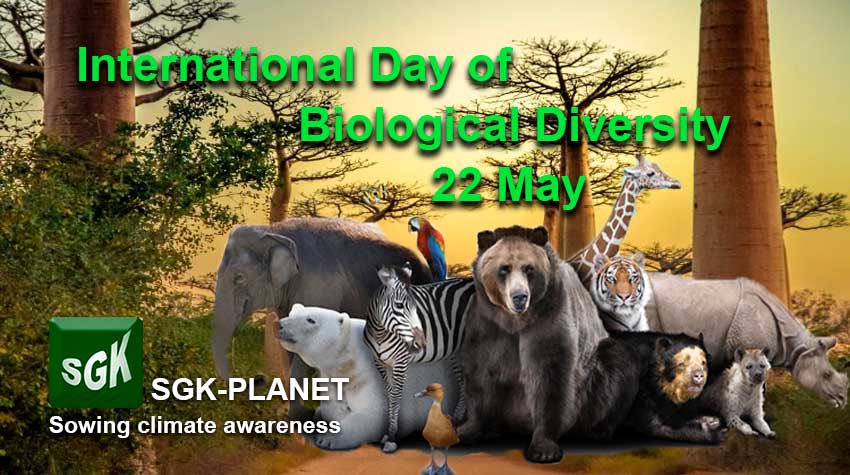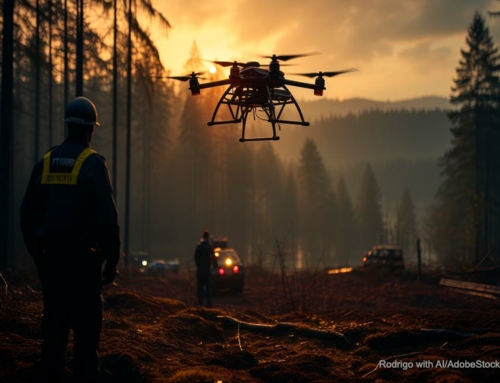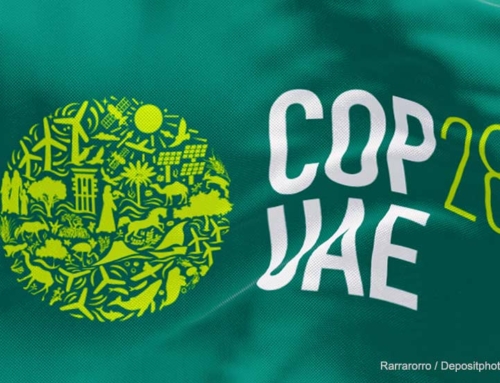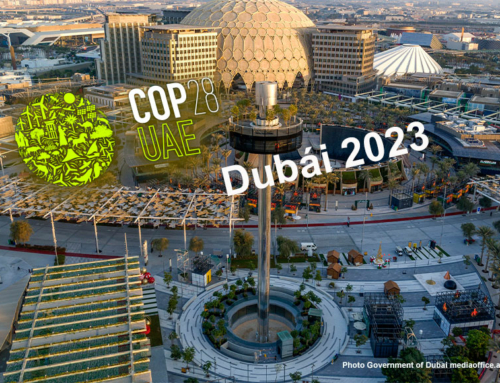Today is International Day for Biological Diversity. Biodiversity is everything. Any issue that we touch, such as global warming, climate change, sustainable economy is a function of it, since it is, for better or for worse, the recipient of our mistakes, successes or omissions.
Be good the occasion to update ourselves on what has happened in the last years in the matter. To this end, and continuing our philosophy “Sowing climate awareness”, we highlight some points of interest on the subject.
There are two very worrying reports that have come to light recently: one refers to the danger of extinction over a million species. Yes, a million! The other tells us about the decrease in the population of vertebrates (mammals, birds, fish, reptiles and amphibians), by 60% between 1970 and 2014. This two information alone explain the title of this article.
Why is the International Day for Biological Diversity celebrated on May 22?
During the Second Earth Summit, Rio de Janeiro, 1992, organized by the UN, the need to preserve biodiversity according to sustainability criteria was discussed. It was at this conference that the Convention on Biological Diversity, adopted in Nairobi on May 22, 1994, was declared by the UN General Assembly on December20, 2000 as the International Day for Biological Diversity, which is celebrated every year on the 22nd. of May. However, despite the good intentions expressed in summits, conferences, agreements, and protocols, it has not been possible to preserve biological diversity. Rather, the opposite has happened, as we will see in this article.
What is and how is Biodiversity defined?
The International Convention on Biological Diversity defines biodiversity as the enormous variety of living beings on Earth, the result of hundreds of millions of years of evolution of species, but also includes species created through non-natural processes by humans. Biodiversity also includes the variety of ecosystems and “the genetic differences within each species that allow the combination of multiple life forms, and whose interactions with the rest of the environment support the sustenance of life on our planet.”
Did you know that the vertebrate population has decreased 60% since 1970?
According to the “Living Planet” Report of the World Wide Foundation (WWF), whose main data we have taken from the media El País, populations of vertebrates (mammals, birds, fish, reptiles and amphibians), has decreased by 60% between 1970 and 2014. For the most part, they are “directly related to human activities, including the loss and degradation of habitat and the overexploitation of wild fisheries”. The Living Planet Index (LPI) measures trends in 16,704 populations of 4,005 vertebrate species in the period studied. A sample that, although it is not a census of all the wildlife, as it indicates WWF, but reports of the current state of the species. He also argues that “we are pushing the limits of nature and the services that provide us with energy and sustenance”.
The most extreme cases are located among the fauna groups studied in freshwater. Since 1970 these have decreased 83%, “the highest extinction rate” in the twentieth century among the vertebrates of the planet. This fall is especially pronounced in the tropics. The NGO points to Central and South America, with a decrease of 89%. However, in a 2011 report, which SGK-Planet keeps in its files, we read that “Spain eats its fishing quota in four months”.
What are the causes of the decline in the world population of vertebrates?
WWF’s LPI report points to the “serious decline in biodiversity” as the main cause, “uncontrolled human production and consumption, responsible for overexploitation of ecosystems and agriculture, as well as pollution, invasive species and diseases or climate change. Marco Lambertini, general director of WWF International, has indicated that “the enormous pressure” exerted on natural resources “is threatening the living structure that sustains humanity”.
What are the dangers of reducing biodiversity?
If we stick to the previous paragraphs, and if we cannot stop the plummeting fall of biodiversity, we could witness a massive extinction of plants and animals with incalculable consequences for life on Earth. In this case thousands of trophic or food chains would break due to this great extinction, and a domino effect could be triggered on the surviving species. The extreme shortage of food and other resources would mean the apocalypse, of which homo sapiens would not be saved either.
What can we do to stop the fall of biodiversity?
The question is not knowing what we are going to do in the matter, because of this there are lists and lists, which have not been more than “wish list” unfulfilled. The problem is to carry out the commitments made on such a sensitive issue. The agreements are no more than a long chain of failures that already cover almost two decades. Humanity has failed, it must be said. Some people have failed due to lack of action and others due to omission, as can be seen in the relationship that we present below, which could well be called “Chronicle of human breaches of biodiversity.” Let’s see:
- 2002. At the South African Summit, organized by the UN, more than 190 countries set out to significantly slow down the loss of biodiversity on the planet by 2010.
2010, May, 10. Concludes the third edition of the study “Global Perspective on Biodiversity” presented in Nairobi, Kenya, on this date. The document notes that the South African agreements have not been met. It warns of the impact of this inaction on sustaining man’s life on Earth. It calls for immediate action and affirms that 170 countries currently have national plans to curb this loss of biodiversity. Achim Steiner, executive director of the UN Environment Program, said: “We have created the illusion that, in some way, we can be without biodiversity, or that biodiversity is secondary in the modern world. reality is that we need it more than ever in a planet of six billion people that will be nine billion in 2050.
2019, March, 15. After five days of negotiations at the fourth United Nations Environment Assembly, once again in Nairobi, the ministers of more than 170 UN Member States presented a bold plan for this transformation. They agreed that the world needs to accelerate the step towards a new development model, to respect the vision established in the Sustainable Development Objectives by 2030. Kenyan President Uhuru Kenyatta said: “the world needs to act now to address record levels of degradation environmental, food insecurity, poverty and unemployment. “The current global statistics are quite alarming and the projections for future generations are terrible, and require urgent action by governments, communities, companies and individuals.” Will there be fulfillment this time?
Sandor A. Gerendas-Kiss







Leave A Comment